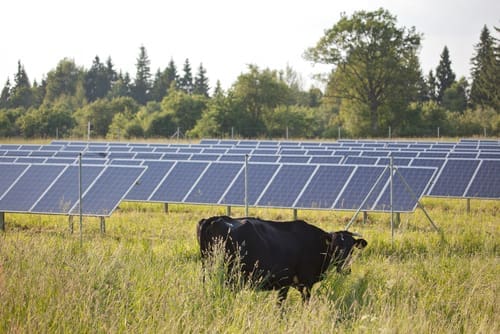
BIG improvements were noted in lowering Greenhouse Gas emissions, water utilisation, water quality, energy use and waste to landfill in a two-yearly Environmental Performance Review of Australian red meat processing released last week.
The Australian Meat Processor Corporation’s biennial Environmental Performance Review has demonstrated processors’ commitment to continuous improvement in their environmental performance.
One of the key findings was a record low for greenhouse gas emissions since reporting for this series began in 1998, with the sector now tracking in line with the Net Zero 2050 targets set out under the Paris Agreement.
The environmental aspects studied for the 2024 report included water use, water quality, energy use, GHG emissions, waste to landfill, and the protection of local amenity (odour and noise control). Additional questions related to scope of operations as well as climate-related financial disclosures.
In the area of energy use, the use of coal is rapidly declining, while there has been a 400pc increase in the use of solar panels since 2022.
CSIRO conducts the review every two years to track the red meat processing industry’s environmental performance across key environmental indicators. Forty-three processing plants of various sizes participated, accounting for 68 percent of the Australian red meat processing throughput.
AMPC’s Sustainability program manager Matthew Deegan said the review covering the 2024 year was a significant study showing evidence-based, industry-level, environmental reporting in the Australian food and beverage processor sector.
“It helps participating processors build trust with their communities and stakeholders over the long term, illustrating the industry’s serious approach to environmental performance,” Mr Deegan said.
“It also allows processors to compare themselves against the whole of the industry while helping each participating processor find areas for improvement in their plants.”
 The 2024 EPR results demonstrated record levels of resilience and improvement in resource efficiency. The improvement follows significant investment by AMPC in renewable energy, integrated wastewater treatment, and resource efficiency, helping to give processors more confidence and capability to better manage their plants, improve processes, and adopt sustainable technologies and processes.
The 2024 EPR results demonstrated record levels of resilience and improvement in resource efficiency. The improvement follows significant investment by AMPC in renewable energy, integrated wastewater treatment, and resource efficiency, helping to give processors more confidence and capability to better manage their plants, improve processes, and adopt sustainable technologies and processes.
“Regional communities will also welcome the industry’s record low water intensity and highest water recycling levels, a testament to the ongoing dedication of Australian red meat processors,” Mr Deegan said.
As part of the review, 35 participating processors will complete a one-on-one environmental benchmarking workshop and will be provided with a confidential solutions report tailored to their plant. All data is aggregated and made anonymous as part of the final published report.
An industry webinar hosted by AMPC will explore the 2024 results on Wednesday 30 April.
For more information about the results or benchmarking workshops, contact AMPC Program Manager Matthew Deegan at m.deegan@ampc.com.au
To read the Environmental Performance Review final report, click here.
Measurements referenced below are expressed as /tonne hot standard carcase weight.
Key results
Water use
- Water intake intensity averaged 7.3 kL/t HSCW which is a record low, achieving a 16pc reduction since 2010.
- Water recycling achieved a record level of 16pc of water consumption, showing a 45pc improvement since 2020.
Wastewater
- Wastewater discharge intensity averaged 6.5 kL/t HSCW, a record low for the sector.
- The sector also achieved lower nutrient level discharge intensities with Nitrogen and Phosphorus being at least 70pc lower than 2020.
Energy use
- On average, total on-site energy intensity was at a record low of 2897 MJ/t HSCW, a 30pc reduction since 2010.
- The use of on-site coal in the sector has continued to rapidly decrease in recent years, with 2024 showing a decline of 27pc since the 2022 EPR. Since the 2020 EPR, the sector’s solar PV adoption has rapidly increased by more than 400pc.
Greenhouse gas emissions
- GHG emissions intensity achieved a record low of 330kg CO2e/t HSCW.
- Emissions intensity reduced by 17pc, at an accelerated rate of decline since 2020
- Gross sectoral emissions have achieved a long-term reduction of 25pc since 2005.
Waste to landfill
- Organic waste was 36pc of all solid waste to landfill, 72pc of this was paunch and non-commercial value skins from a select few sites.
- A large portion of this organic waste to landfill might be diverted with further sectoral work around waste valorisation.
- Inorganic waste was 64pc of all solid waste to landfill, with facility-level waste plastic being less than 13pc of this.
Benefit for Industry
Individual sites have their own unique characteristics meaning that priorities for environmental improvement need to be determined at the local site level, the report noted.
Nevertheless, large variation in environmental indicator results were evident across sites, suggesting that there remains ample opportunity for further gains across the industry.
For individual processors, these results can be beneficial for benchmarking site performance. As a statement of overall industry levels, they can also be used to build trust with communities and stakeholders by demonstrating commitment to transparency and ongoing environmental performance improvement.
The results can also inform strategic research investment and the development of environmental management tools and resources. The project Final Report includes metrics for the Australian beef and sheep sustainability frameworks.

HAVE YOUR SAY